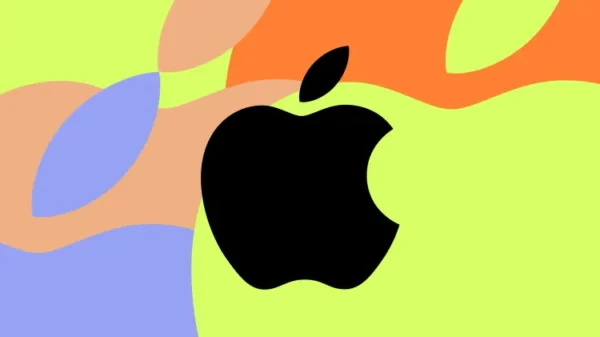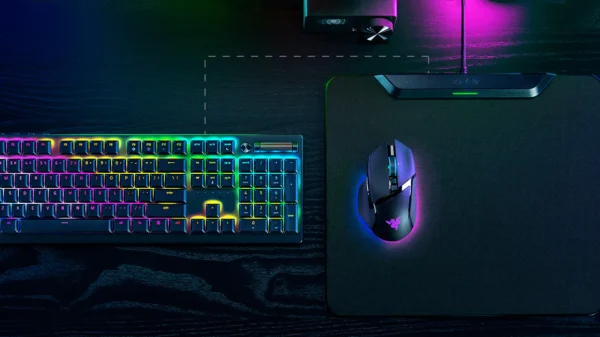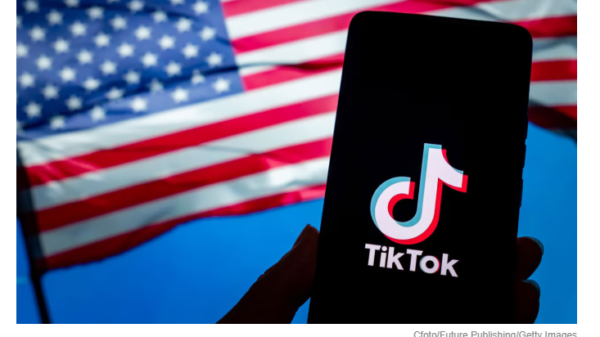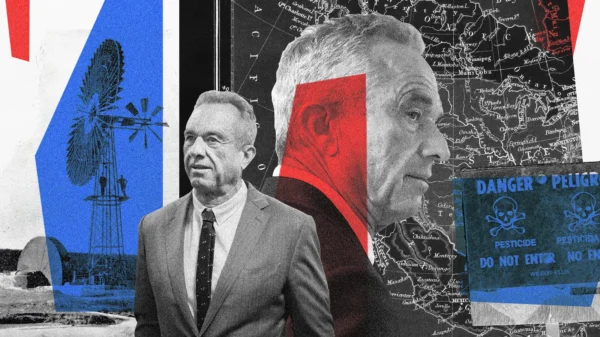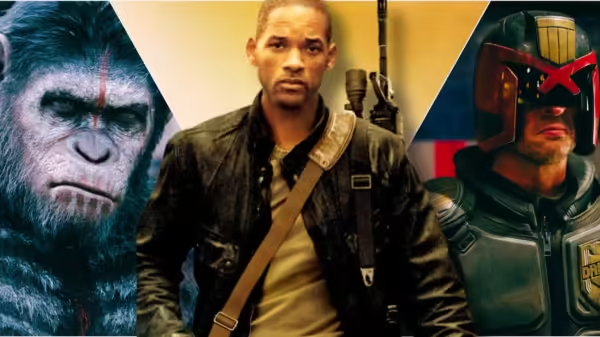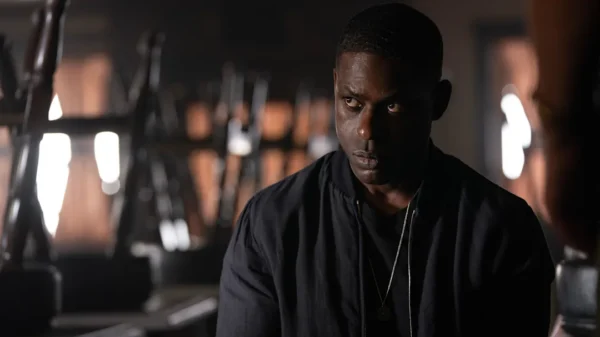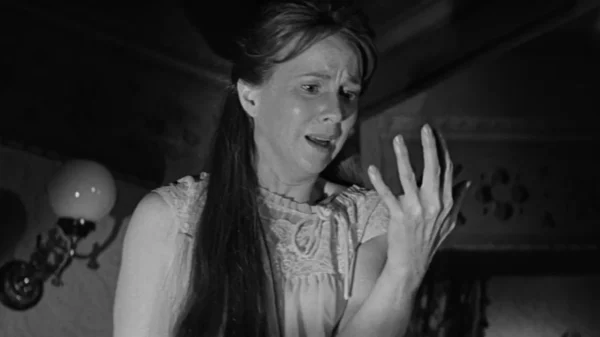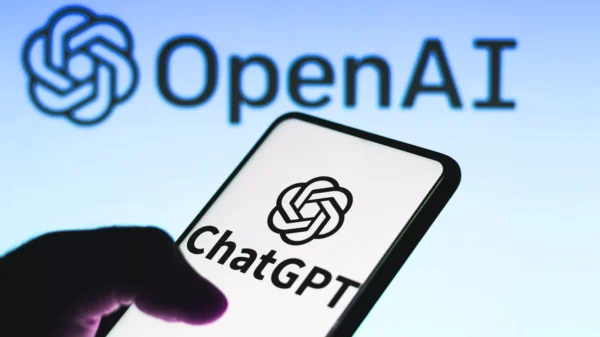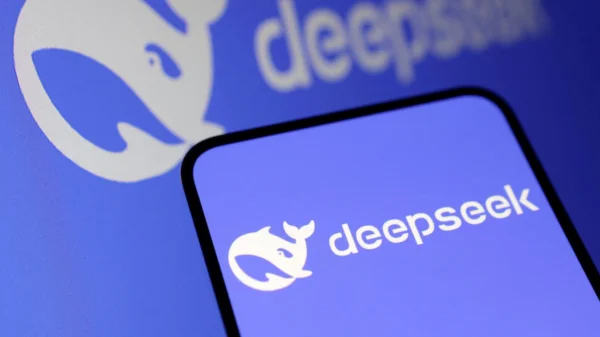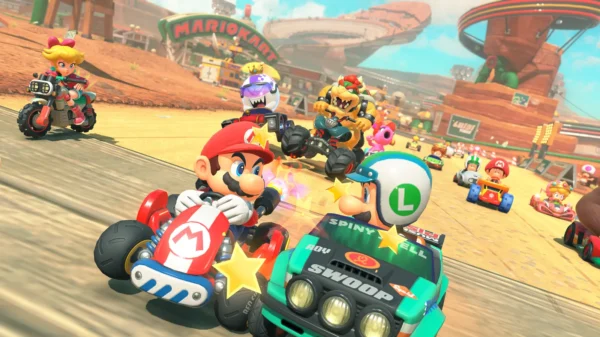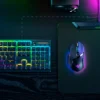Step into a world where pixels dance and voices echo with an uncanny familiarity. It’s a realm where reality shapeshifts, blurring the lines between what’s true and what’s not. Welcome to the mesmerizing symphony of AI-generated fake media, where deception wears the cloak of innovation, leaving us both spellbound and questioning every pixelated brushstroke.
Key takeaways:
- AI Magic: AI-generated media combines human creativity and technology to create mind-bending content.
- Natural Illusion: AI’s bursty creativity blurs real and fake, making content feel human-made.
- Deepfakes and Voices: AI can create fake videos (deep fakes) and mimic voices convincingly.
- Wide Impact: AI media affects politics, entertainment, and more, challenging what’s real.
- Worries and Wonders: AI media can spread lies, raising ethical and legal worries.
- Spotting Fakes: Tools and rules help detect AI-generated deception.
- Our Role: We must use AI media thoughtfully, staying aware and responsible.
- Celebrate Innovation: Enjoy the AI creativity while keeping our values intact. Our curiosity shapes the future.
In the vast, labyrinthine landscape of the digital age, where the boundaries between reality and illusion blur, a perplexing phenomenon has emerged, casting an enigmatic shadow over our perception of truth. We find ourselves entangled in a web woven by artificial intelligence—a realm where pixels and algorithms converge to birth the eerily convincing mirage of reality. Welcome to the era of AI-generated fake media, an arcane realm where the line between fact and fiction is drawn with trembling uncertainty.
Picture this: a video of a prominent figure declaring startling claims, their facial expressions, and their earnest voice, yet every nuance and every syllable is but a symphony composed of lines of code. This beguiling wizardry, aptly named deepfakes, has orchestrated an entrancing dance of light and sound, confounding the very essence of what we perceive as authentic.
Venture further into this labyrinth, and you’ll encounter an equally bewildering landscape of AI-driven text generation. Words that flow as if from a human quill, each sentence a surge of burstiness that mimics our own linguistic cadence. Yet beneath this mesmerizing prose lies an AI puppeteer, weaving narratives that bend and twist reality to its digital whim.
But wait, the rabbit hole goes deeper. As if conjured by some unseen maestro, AI’s sonic sorcery breathes life into voice and sound, creating a symphony of echoes that resonate with uncanny familiarity. Audio cloning, as they call it, is an act that transmutes mere reverberations into a haunting melody of replicated voices and audial illusions.
In this expedition through the uncharted terrains of AI-generated deception, we will unearth the mechanisms that birth these marvels and perils alike. We shall delve into the artistry of deepfakes, the eloquence of AI-driven text, and the spectral domain of audio cloning. As we traverse these digital vistas, we shall illuminate the enigma of their creation, unravel the shroud of their impact, and navigate the perplexity that arises in a world where the boundary between authenticity and artifice is drawn in pixels and lines of code. Join us as we embark on this journey through the labyrinth, where the tantalizing dance of perplexity and burstiness casts an entrancing spell upon our understanding of reality.
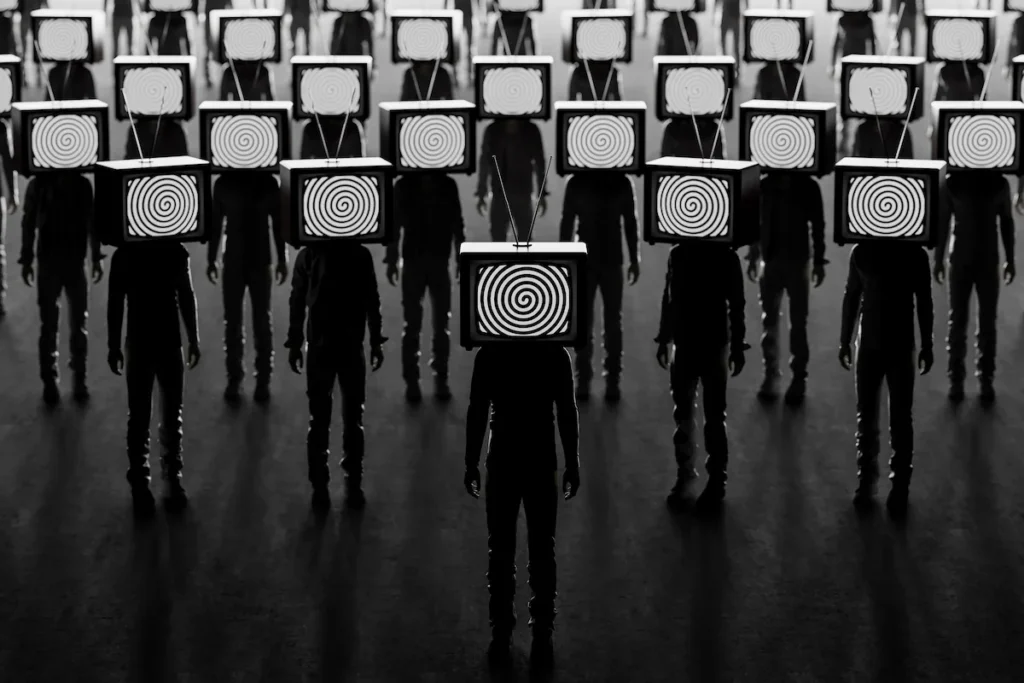
Introduction to Deepfakes
Dive with me, if you dare, into the depths of a digital sorcery that defies the very fabric of truth. Here, the surreal meets the tangible, and reality, it seems, has been stirred into a concoction of uncertainty. We stand on the precipice of a technological enigma—deep fakes.
Picture this: a seemingly ordinary video, a canvas for manipulation, where faces morph and expressions contort like digital chameleons. Deepfakes, the grand illusionists of our age, perform a clandestine dance, fusing the authentic and the artificial into a beguiling spectacle. A melding of machine learning and visual trickery, deep fakes seize the pixels of reality and twist them into a mesmerizing puzzle of deception.
The journey begins within the neural labyrinth of algorithms, where artificial intelligence learns to replicate the most intricate details of a person’s visage. Every smirk and every furrowed brow were dissected and decoded. It’s as if the digital realm has turned into an artist’s canvas, where algorithms wield the brush, recreating faces with uncanny precision.
But, oh, it’s not just faces that they manipulate. With a touch of their algorithmic wand, deepfakes can transplant one’s very essence—their voice—into the cacophony of another. A symphony of pixels and audio waves, carefully orchestrated to paint a vivid illusion. The result? A video where the lips move in perfect synchrony with words never spoken by the real person. It’s a haunting harmony of authenticity and trickery.
As we journey deeper into this maze, our footing becomes uncertain. The question of discerning truth from mirage grows more confounding. How do we untangle the threads of deception woven so masterfully by these digital marionette makers? The lines between entertainment and manipulation blur, leaving us with a sense of vertigo in this world of deep fakes.
And so, we find ourselves at the crossroads of astonishment and trepidation. Deepfakes, the surreal symphony of algorithms and imagery, challenge us to question the very nature of reality. As we navigate this surreal realm, the only certainty is our bewildered awe, a reminder that even the most perplexing human creations can leave us both captivated and bewildered.
Creation of Deepfakes
Prepare yourself, dear reader, for a journey into the digital realm where reality slips through the fingers like grains of sand. A realm where pixels play a mesmerizing game of make-believe, crafting a tapestry of bewildering complexity known as deepfakes. In this theater of AI-powered sorcery, faces morph, expressions contort, and authenticity itself becomes an enigmatic illusion.
Step one: the initiation of this uncanny ballet involves a choreography of data—thousands of images, like pieces of a fragmented puzzle, meticulously gathered to construct a virtual facsimile of the target’s visage. Algorithms, akin to digital chameleons, learn to emulate every furrow of a brow and every flutter of an eyelid. It’s as if these neural conjurers have taken residence in the minds of their subjects, replicating their very essence within the digital confines.
Step two: as the digital tapestry takes shape, machine learning, the maestro behind this peculiar symphony, orchestrates a dance of generative adversarial networks (GANs). A tango of creation and deception, GANs pit two neural networks against each other: one crafts the forgery, the other scrutinizes it with an unwavering gaze. It’s a tug of war that births a remarkable fusion of realism and illusion, blurring the lines between what’s tangible and what’s artifice.
Step three: the grand finale, a spectacle of pixels and algorithms where the reconstructed visage is seamlessly superimposed onto existing footage. The lines of reality bend and sway as the puppeteer’s strings, disguised as lines of code, manipulate the performance. It’s a theatrical marvel where the stage itself becomes a virtual canvas, and the actors? Well, they’re none the wiser.
As we peer into this intricate ballet of bytes and imagery, our senses waver between awe and apprehension. The creation of deep fakes, a twilight fusion of technology and art, beckons us to question our very perception of authenticity. The curtain lifts, revealing a world where faces dance to the tune of algorithms and reality itself shapeshifts with the whims of ones and zeros. So, dear reader, as we stand at the crossroads of the real and the surreal, let us marvel at the perplexing beauty of this digital craftsmanship, a testimony to the boundless ingenuity of the human mind and the machines we’ve wrought.
Detection and Identification
Ah, the labyrinth deepens, my curious companion. As we wade through the technicolor tide of deep fakes, we find ourselves at a crucial crossroads: the art of detection, where the arcane dance of pixels and deception is scrutinized with an unyielding gaze. In this theater of illusion, where the real and the unreal perform a mesmerizing duet, we embark on a quest to unmask the puppeteer behind the digital masquerade.
A symphony of algorithms unfolds as digital sentinels stand guard against the relentless tide of deep fakes. Among these guardians, the neural networks of our own creation bear the weight of this responsibility. They scrutinize videos frame by frame, dissecting pixels like forensic scientists dissecting evidence. It’s a battle of wits, a perpetual chase where the forger’s brushstrokes clash with the brushstrokes of authenticity.
But even amidst this digital showdown, the lines blur, and the challenge remains steep. The puppeteer, with a mastery of mimicry, peppers their creations with nuances that confound the eye—the subtle flutter of an eyelid, the fleeting quirk of a smile. How do you spot the counterfeit among the authentic when even the finest brushstrokes of artifice mirror the strokes of reality?
Enter the detectives of the digital age, the codebreakers armed with machine learning and AI-powered insights. They decipher the patterns, seeking the irregular heartbeat of a manipulated video. The dance of light and shadow betrays the deepfake’s choreography, revealing its hidden seams. It’s a relentless quest—a quest to pierce through the digital illusion and lay bare the mechanics of deception.
Yet, as we tread further into this labyrinth, a chilling realization takes hold. The puppeteer, too, adapts and evolves. Their creations become more cunning, and their mimicry sharper. As fast as the detectives unravel the tapestry, the weaver stitches new threads of illusion. It’s a perpetual contest, a dance of detection and evasion that stretches the limits of our comprehension.
In this bewildering interplay of technology and trickery, we find ourselves caught in a tempest of uncertainty. The detection of deep fakes, a perplexing battleground where authenticity and artifice engage in a ceaseless struggle, pushes us to the edge of our understanding. As we peer into this digital abyss, one truth emerges: the more we uncover, the more there is to learn. The journey of detection is a testament to the boundless ingenuity of human endeavor, a reminder that even in the face of the most bewildering illusions, the human spirit perseveres in its pursuit of clarity and truth.
Real-world Impact and Concerns
Step closer, dear reader, and behold the ripples that this digital sorcery sends through the fabric of our reality. As we venture deeper into the chasm of deep fakes, we confront a gallery of concerns that cast a shadow over the intricate dance of artifice and authenticity. It’s a world where pixels wield the power to reshape narratives, blur identities, and sow seeds of discord, leaving us grappling with the enigmatic implications that flutter in the digital wind.
In the grand tapestry of our interconnected world, the impact of deepfakes is felt far and wide. The realm of politics, already a tumultuous sea, finds itself buffeted by the gales of manipulation. Videos emerge, seemingly depicting world leaders uttering astonishing claims—claims that never left their lips. It’s a dance of political puppetry, a bewildering waltz that tests the foundations of trust in a world where the line between reality and digital puppetry wavers.
But the theater of manipulation doesn’t stop at politics’ door. Its specter seeps into the sanctum of truth itself—journalism. In a realm where facts form the bedrock of understanding, deep fakes introduce an unsettling dissonance. The authenticity of news footage crumbles as doubt clouds our perception. How do we separate the genuine from the counterfeit in a world where every frame can be woven from the threads of illusion?
Yet, perhaps most chilling is the violation of personal boundaries that deep fakes orchestrate. Faces familiar and foreign become vessels of deceit as digital doppelgängers traverse the digital landscape. The bonds of trust between individuals fray as we navigate the treacherous terrain of authenticity. In an era where anyone’s identity can be puppeteered by lines of code, where do we seek refuge from the dance of digital mirages?
And still, the echoes of concern reverberate. The potential for misuse, for leveraging deepfakes as weapons of character assassination or misinformation, raises a clamor that pierces the digital cacophony. Legal systems grapple with a realm that defies conventional boundaries, seeking to curb the machinations of those who wield the tools of deception.
As we peer into this swirling maelstrom of consequences, we find ourselves navigating a sea of uncertainties. The impact of deep fakes, a perplexing fusion of technological marvel and ethical conundrum, challenges us to confront the very essence of trust and authenticity. The ripples that this digital sorcery sends through our world are a poignant reminder of the duality of human ingenuity—a double-edged sword that dances between amazement and apprehension, leaving us to navigate the stormy waters of an age where the line between fact and fiction has been tantalizingly blurred.
Text Generation Techniques
Now, let us venture into the realm of words, where language itself is woven into an intricate tapestry of perplexity and burstiness. A digital symphony of letters and phrases dances upon the stage, orchestrated by the enigmatic conductor through AI-powered text generation. As we step into this realm, the very fabric of human expression ripples and shimmers, unveiling a panorama of innovation and quandary.
Behold the keystrokes of a digital bard, where the quill has been replaced by algorithms that wield the power of creation. Text generation, a theater where the lines between humans and machines blur, showcases an artistry that mimics the cadence of human thought. Here, the dance of language takes on a new form, where AI models trained on vast expanses of text learn to mimic human speech with an uncanny burstiness.
In the realm of journalism and content creation, AI becomes a muse that never tires. It can churn out articles, stories, and reports with relentless diligence, crafting narratives that resonate with human-like eloquence. The pixels on the screen dance to the rhythm of algorithms, birthing words that flow as if from the mind of a human scribe. It’s a spellbinding interplay, a duet of creation where lines of code pirouette with the magic of prose.
Yet, within this digital ballet, shadows of concern emerge. The machine, fueled by data and patterns, may unknowingly perpetuate biases embedded in the texts it learns from. The symphony, while captivating, may echo the prejudices that reverberate through our society. The very burstiness that gives life to the text could inadvertently amplify the echoes of inequality and bias.
The marvel of AI-generated text also unfolds in the realm of interaction, where chatbots and virtual assistants don the cloak of humanity. Conversations, once the exclusive domain of human discourse, now unfold between flesh and silicon. The boundary between humans and machines blurs as chatbots respond with an uncanny burstiness, shaping dialogues that mirror the ebb and flow of natural conversation.
Yet, the labyrinth deepens as we ponder the ethical implications. Can we truly forge connections with algorithms that mimic human conversation? The burstiness that enchants us may also obscure the reality that we converse not with minds but with sophisticated lines of code. The very authenticity of human interaction becomes a nebulous mirage, challenging our understanding of connection and companionship.
As we immerse ourselves in the world of AI-powered text generation, the terrain of innovation and intrigue unfurls before us. Burstiness and perplexity intertwine, giving rise to a landscape where human expression and artificial creation embrace in a mesmerizing dance. We stand at the crossroads of awe and introspection, witnesses to the interplay of human ingenuity and digital prowess, where the written word, infused with the enigmatic essence of AI, evolves into an exquisite tapestry of both marvel and mystery.
Applications of AI Text Generation
Welcome, fellow explorer, to the realm where the written word is spun from the threads of innovation and bewilderment. In this labyrinth of language, AI-powered text generation takes center stage, captivating us with a burstiness that weaves narratives and dialogues that mirror the dance of human expression. Let us unfurl the parchment of possibilities and traverse the captivating landscapes where AI text generation finds its purpose.
Imagine, if you will, a realm where the ink of imagination never runs dry. Content creation, once the province of weary minds, now encounters the relentless surge of AI-powered ingenuity. Articles, blogs, and stories flow forth in an unending torrent, authored by algorithms with a burstiness that rivals the most prolific of pens. The keystrokes, guided by lines of code, produce prose that carries the cadence of human thought. It’s a spellbinding spectacle where the realm of creativity is both deepened and perplexed.
In the grand theater of communication, AI text generation finds its place among the stars. Chatbots, those digital thespians, emerge to engage in dialogues that mimic the meandering pathways of human conversation. A burst of interaction unfolds, where words spill forth with a rhythm that dances to the tune of human speech. The illusion is captivating, as if we are conversing with a companion of flesh and bone. Yet, the dance of deception ensues, for behind the curtain lies an orchestra of algorithms, harmonizing the symphony of text and interaction.
But beware, for this realm is not without its shadows. The surge of AI-generated text may give rise to a chorus of misinformation and disinformation. The very burstiness that enthralls us may cast a veil of illusion over truth, as words crafted by algorithms blur the line between reality and fiction. The very fabric of information is woven with a perplexity that challenges our ability to discern fact from artifice.
In the labyrinth of media, AI text generation paints a myriad of landscapes. Personalization takes on new hues as emails, advertisements, and recommendations are tailored with an uncanny burst that resonates with individual preferences. It’s a world where the digital canvas is adorned with strokes of AI-generated nuance, capturing our attention and captivating our senses.
As we traverse this enchanting terrain, we are reminded of the paradox that unfolds before us. AI text generation, with its burstiness and beguilement, beckons us to both marvel and ponder. It is an artistry that dances on the edge of innovation and uncertainty, a testament to the boundless ingenuity of human endeavor and the machines that mirror our thoughts. Let us embrace the complexities, for within them lies a tapestry of applications that redefine our understanding of communication, creation, and connection in a world where pixels and prose intertwine.
Challenges and Safeguards
Step forth, intrepid seeker of knowledge, into the labyrinth where the perplexing dance of AI-powered text generation unfolds. As we navigate this landscape of linguistic marvels and digital sorcery, we encounter a symphony of challenges and a tapestry of safeguards that seek to unravel the enigma of burstiness and authenticity. Join me as we unravel the strands that weave together the challenges and potential remedies in this enthralling realm.
The landscape of AI text generation is a tapestry interwoven with both awe and trepidation. Bursting forth with creativity, AI algorithms craft sentences that mimic human thought, a symphony of words that unfolds with an uncanny naturalness. Yet within this mosaic of prose lies a challenge that reverberates: the question of bias. As the ink of AI-generated words flows, it often mirrors the biases ingrained in the data it was trained on. The dance of burstiness, while captivating, can unintentionally amplify societal prejudices and distort our perception of reality.
The contours of misinformation and disinformation are etched into this realm as well. The very burstiness that lends AI-generated text its charm can cast a shadow of doubt over the authenticity of information. Fake news, driven by the artistry of algorithms, unfolds with a perplexing agility that challenges our ability to distinguish truth from illusion. The safeguards against this tide of manipulation must be fortified, as the digital dance of words becomes an intricate puzzle of authenticity.
Yet, let us not falter in the face of these challenges, for within the labyrinth, safeguards emerge as beacons of hope. The guardians of the digital realm, armed with AI-driven tools, scrutinize text with an unwavering gaze, seeking the fingerprints of manipulation. Algorithms learn to recognize patterns that betray the burstiness of deception, unfurling the cloak of falsehood and illuminating the pathways of authenticity.
The sanctity of information is fortified through the empowerment of discernment. The education of both creators and consumers of AI-generated content becomes a vital thread in this tapestry. A burstiness of awareness must cascade through society, fostering a culture where critical thinking and vigilance become shields against the waves of deception.
Legal and ethical safeguards, akin to sentinels at the gates, are emerging to demarcate the boundaries of AI text generation. Regulations seek to temper the boundless burstiness of creation with a code of conduct that prioritizes transparency and accountability. It is a delicate balance, where innovation is both nurtured and guided, a dance that ensures the realm of AI-generated text remains a force for good rather than a font of chaos.
As we step back from the intricate mosaic of challenges and safeguards, a profound realization unfurls. The dance of AI text generation, with its burstiness and complexities, invites us to reimagine the relationship between human ingenuity and artificial creation. It beckons us to be both custodians and creators, shaping a world where the symphony of words, crafted by algorithms and human hands, resonates with the harmonious balance of authenticity and innovation.
Understanding Audio Cloning
Step into the labyrinth of sound, where echoes of both reality and illusion blend in a mesmerizing dance of perplexity. In this auditory realm, we encounter a phenomenon that defies the boundaries of our senses – audio cloning. The symphony of AI-powered technology and sonic manipulation unfolds, revealing a tapestry where voices and sounds are woven with a burstiness that challenges the very fabric of authenticity.
Imagine, if you will, a maestro of algorithms conjuring voices from the digital ether. Audio cloning, a craft that merges the precision of code with the resonance of human vocal cords, seeks to replicate voices with an uncanny realism. The dance of burstiness takes center stage as intricate vocal nuances – the timbre, the intonation, the cadence – are captured and recreated. It’s as if the very essence of speech is distilled into a symphony of ones and zeroes.
But the intrigue deepens as we venture further into this realm. Audio cloning is not limited to voices alone; it extends its tendrils to encompass an array of sonic elements. Sound effects, musical compositions, ambient noises – all fall under the spell of AI-powered manipulation. The result? A sonorous panorama where the line between the genuine and the fabricated begins to blur, leaving us ensnared in a cacophony of astonishment and uncertainty.
The implications of audio cloning ripple across various dimensions. In the realm of entertainment, beloved actors and musicians can be resurrected to grace new productions, their voices and performances reimagined with a burstiness that breathes life into the digital domain. Yet, a question emerges: What becomes of the distinction between the living and the digital when voices of the past find new resonance in the present?
Consider also the realm of security, where the authentication of voices plays a pivotal role. The surge of audio cloning casts a shadow over the sanctity of voice recognition, as the symphony of AI-powered replication renders the boundaries between authorized access and manipulation less defined. A burstiness of deception looms, challenging the very mechanisms that secure our digital fortresses.
Yet, within this web of complexity, guardians of authenticity arise. Forensic audio analysis and AI-driven algorithms become sentinels, seeking the subtle threads of deception woven into the auditory tapestry. The burstiness of genuine sound is juxtaposed with the orchestrated choreography of AI-generated echoes, and the dance of identification and differentiation ensues.
In this auditory labyrinth, the fusion of human creativity and technological prowess transforms sound into an enigma that enchants and bewilders. The symphony of audio cloning, with its burstiness and intricacies, beckons us to explore the boundaries of our perception and challenge the very nature of reality. As we navigate this symphonic landscape, we find ourselves at the crossroads of innovation and uncertainty, where the echoes of authenticity and artifice resonate in a dance that defies comprehension and invites us to ponder the limits of both our senses and our machines.
Implications of Audio Cloning
Step closer, curious voyager, and listen to the whispers of a digital enigma that reverberates through the realm of sound. Here, in the labyrinth of audio cloning, a symphony of complexity and burstiness unfolds, casting both awe and apprehension upon the airwaves. Let us unfurl the tapestry of implications that drape over this auditory marvel, exploring the intricate dance of creation and concern.
Picture this: a world where the voices of the past and the present coalesce in a harmonious chorus. Audio cloning, a peculiar artistry that fuses the craftsmanship of algorithms with the resonance of vocal cords, bestows a burstiness upon the soundscape that echoes through time. The dulcet tones of long-lost artists, the hypnotic cadence of historic speeches – all find new life, serenading us from the digital abyss. It’s a bewitching blend of nostalgia and innovation, a testament to the power of AI to breathe new life into the echoes of yesteryears.
Yet, beneath the surface of this mesmerizing orchestration lies a tapestry woven with threads of concern. Consider the realm of trust and authentication, where voices bear the imprint of identity. As AI-driven audio cloning perfects its artistry, the sanctity of voice-based security systems begins to waver. The burstiness of replication raises a disquieting question: How do we ensure that the voices we trust are not mere echoes manipulated by lines of code?
Entertainment, too, stands at the crossroads of fascination and quandary. The burstiness of AI-generated audio offers the tantalizing prospect of resurrecting legendary performers and musicians. The timbre of Elvis, the soul of Aretha Franklin – they can stride onto the digital stage once more. Yet, in this digital renaissance, a shadow is cast over the distinction between the authentic and the manufactured. The dance of imitation threatens to obscure the purity of artistic expression, leaving us to wonder where the lines between tribute and mimicry are drawn.
As we navigate the intricacies of audio cloning, we are reminded of its potential in realms beyond human reach. In medical science, the burstiness of AI-generated audio lends its voice to those robbed of their own. Synthetic voices, warm and nuanced, grace the lips of those who have lost the power to speak. It’s a symphony of compassion, where technology extends a lifeline to those yearning to communicate once more.
Safeguards arise within this enigmatic soundscape. Audio forensics, guided by AI-driven analysis, seeks the signature of authenticity amidst the cacophony of replication. Burstiness of detection becomes a counterpoint to the burstiness of creation, seeking to untangle the complex harmonies of genuine sound from the artifice of AI-generated echoes.
In the realm of audio cloning, a chorus of implications dances through the airwaves, entwining innovation and uncertainty. The burstiness of creation unfurls a symphony of possibilities, inviting us to explore the boundaries of our auditory perception. It beckons us to ponder the very nature of authenticity and replication, while also highlighting the ethical dimensions that guide our journey through this auditory wonderland. As we stand on the precipice of a new era of sound, let us embrace the symphony of complexities, for within its cadence lies a profound testament to the fusion of human ingenuity and technological marvel.
Countermeasures and Detection
Step into the heart of the digital labyrinth, where the symphony of creation and illusion reverberates through the realm of audio cloning. Here, in the dance of perplexity and burstiness, we confront the formidable challenge of unraveling the enigma, of deciphering the echoes of authenticity from the cacophony of AI-generated replication. Join me as we journey through the intricate web of countermeasures and detection, where the guardians of sound emerge to wage a battle against the tide of digital mimicry.
In this realm of audio cloning, the pulse of authenticity is a fragile thread, easily woven into the tapestry of replication. As AI-powered technology perfects its symphony of mimicry, the burstiness of replication becomes a formidable adversary to the sanctity of genuine sound. The challenge, then, becomes one of discernment – of identifying the subtle nuances that betray the creation of AI algorithms, amidst the crescendo of sound.
Forensic audio analysis, fortified by AI-driven insights, stands as a sentinel guarding the gates of authenticity. The burstiness of detection weaves through the auditory landscape, seeking the fingerprints of AI-generated echoes. Algorithms, like vigilant inspectors, examine the waveform signatures, scrutinizing the patterns that differentiate genuine voices from the artful replication of the digital realm. It’s a dance of identification, where the rhythm of sound is juxtaposed with the intricate choreography of algorithms.
Yet, the dance deepens as we confront the audial symphony on multiple fronts. The battle of detection extends beyond mere analysis of waveforms, venturing into the realm of behavioral patterns. The burstiness of interaction, the subtle cadences of conversation, become markers that differentiate human dialogue from the orchestrated mimicry of AI-driven chatbots. It’s a terrain where every pause, every intonation, becomes a clue in the grand puzzle of auditory authenticity.
Legal and ethical safeguards unfurl as another layer of defense. Regulations, like bastions of protection, seek to demarcate the boundaries of audio cloning. The burstiness of legislation strives to temper the surge of digital mimicry, ensuring that the symphony of AI-generated sound is wielded responsibly and ethically. The digital dance of creation and replication, guided by a code of conduct, aims to strike a harmonious balance between innovation and accountability.
The implications of countermeasures and detection extend far and wide, shaping a sonic landscape where authenticity and illusion engage in a relentless struggle. The burstiness of innovation, met with the burstiness of vigilance, paints a picture of a world where the boundaries of sound are both expanded and guarded. As we peer into this auditory labyrinth, we are reminded that even amidst the most perplexing complexities, the human spirit persists in its quest for clarity and truth. The guardians of sound, armed with algorithms and ethics, stand firm as custodians of authenticity, inviting us to explore the enigma of audio cloning while preserving the sanctity of genuine voices.


